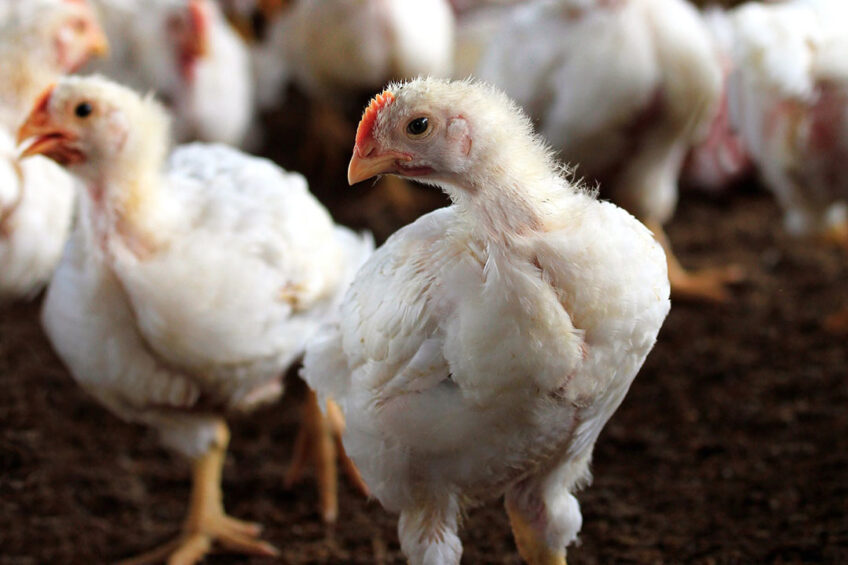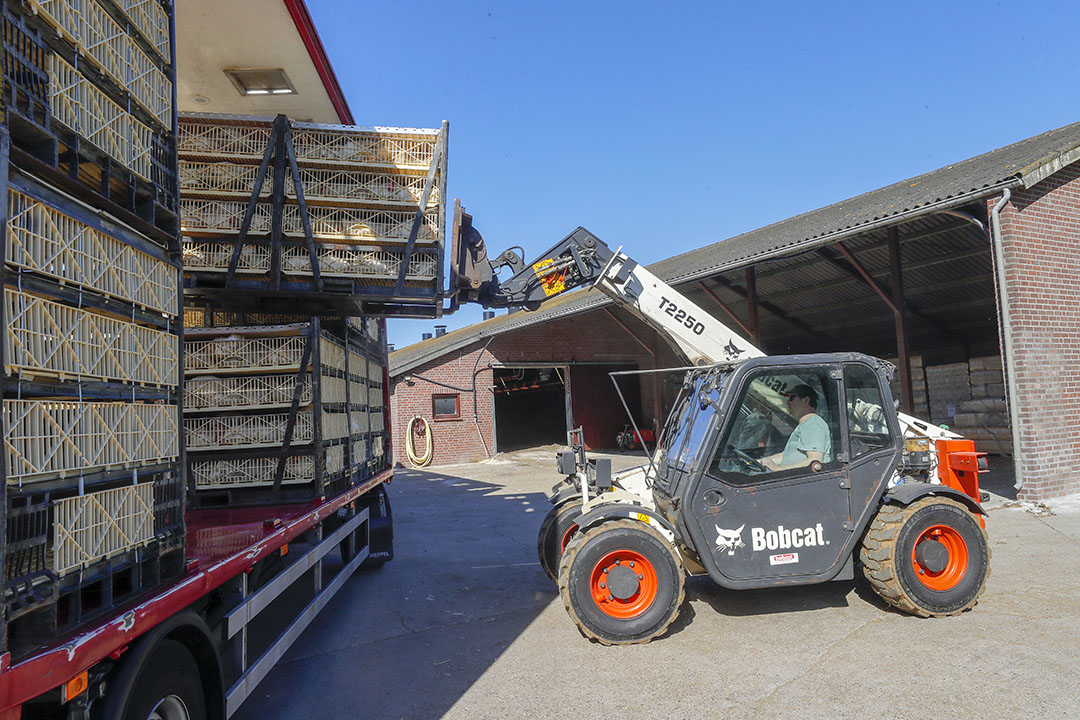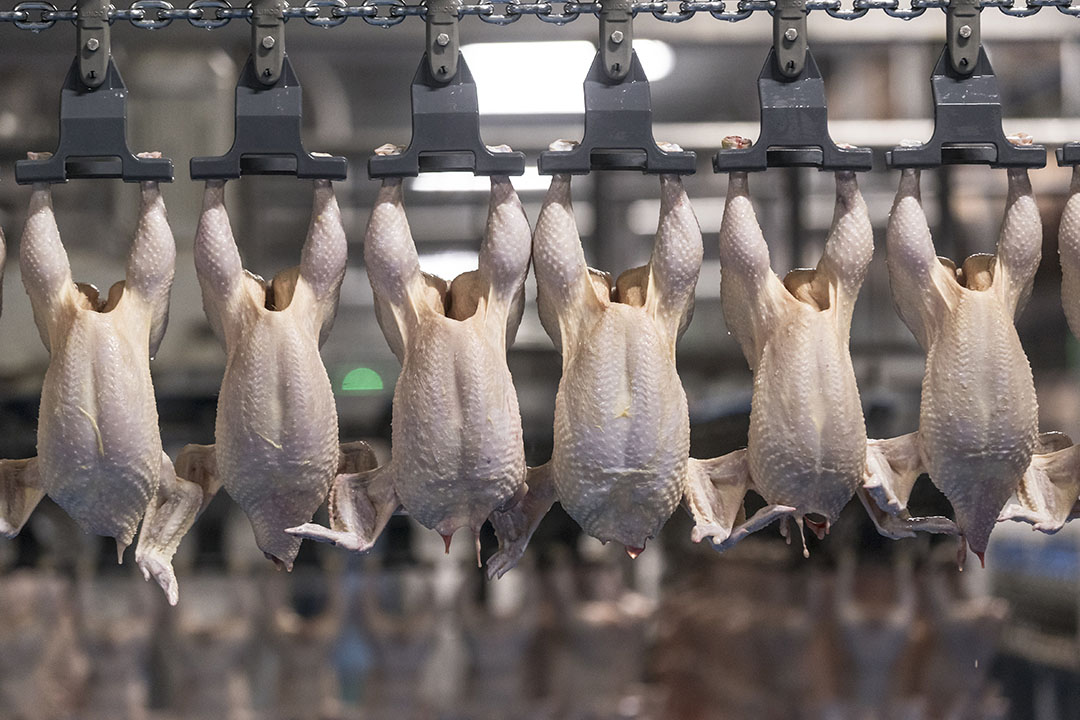Slowing broiler growth with nutritional interventions

In broiler production, efficiency and time to market are key. Every link in the production chain is attuned to that. However, due to disruptions along the chain, it is sometimes necessary to delay farm-to-processor deliveries. To remain within ideal slaughter parameters, it may be necessary to slow broiler growth.
According to the National Chicken Council, the United States poultry industry processed over 9.22 billion broilers in 2020. To accomplish this, the poultry industry relies on a vertically integrated production system to ensure the seamless flow of poultry products from the breeder farm, through the hatchery, to the broiler farm and on to the processing plant. The logistics for each step are tightly coordinated so that when product is moved from one link in the supply chain, the next link is ready to receive it. This not only safeguards the welfare of each bird but also improves the efficiency of a system that operates on razor-thin margins.
Problems arise when disruptions occur in the supply chain. Quick and decisive action by a competent team will deal with supply chain disruptions but the solution will often require scheduling changes. So how to respond to disruptions that delay flocks leaving the farm and entering the processing plant?
Just in time
Modern commercial broilers are fast growing, averaging 60 grammes (2.1 ounces) per day over the course of the production period with maximum growth occurring 3 weeks post-placement. For this reason, the entire broiler production process is considered a ‘just in time’ process, with harvesting and delivering broilers to processing plants scheduled precisely to maximise efficiency.
Occasionally, however, we receive requests for nutritional and feeding interventions to slow broiler growth. Over the last 2 years, supply chain disruptions caused by the Covid-19 pandemic have created conditions which made it necessary to manage broiler body weight. Other reasons for supply chain disruption stem from labour shortages (for harvest or processing), a sudden change in demand (pandemic, unexpected trade restrictions or disease), or natural disasters (ice storms, flooding, fire or power outages).
The degree or magnitude of broiler growth slowdown will be driven by the severity of the disruption keeping the birds from moving off the farm to the processing plant. The steps needed to slow broiler growth by 1 or 2 days varies greatly compared to those needing to slow growth by as much as 6 or even 10 days.
The primary goal when applying a growth intervention strategy is to slow growth and maintain carcass quality without adversely affecting bird health and elevating mortality. However, these interventions may have an impact on carcass and breast meat yield. Successfully slowing broiler growth depends on the following general nutritional recommendations:
- Lower the percentage of dietary digestible lysine (%dLys) and dietary energy.
- Formulate all other essential amino acids in an ideal ratio to %dLys.
- Ensure that amino acid levels go down proportionately when %dLys is lowered.
- Do not use any minimum limit on percentage protein in the feed formulation software.
Specific dietary recommendations for slowing broiler growth and achieving the desired market weight can be provided. Management must always meet the basic needs of the flock while adjusting the programme to benefit fully from the breed’s potential. Some of the guidelines may need to be adapted locally based on your own experience or infrastructure and to enable you to comply with any national requirements for animal welfare or care. Cobb’s local technical service and world technical support teams can help you when managing a flock experiencing a processing delay.

Slowing broiler growth by 2-3 days
Small broilers (processing weight <1.75 kg, 28-30 day grow-out): Successful intervention should start about 7-8 days prior to the normal market age. If 3 diets are used in the grow-out programme, then we recommend lowering the energy content of the last feed by 200-250 Kcal/kg (90-115 kcal/lb) and %dLys content by about 0.05% units. For example, lowering 1.15% dLys to 1.10% dLys.
Begin feeding this modified diet 7-8 days prior to the original market age. Manage feeding time after 3 weeks of age by applying feed restriction for 2-3 hours per day. Apply the feed restriction at the same time every day. Reducing light intensity in the broiler house (if possible) should increase the intervention efficacy. Feeding a pelleted diet with a high percentage of fines will also slow feed consumption rates.
Medium and large broilers (processing weight >1.75 kg): The procedure for managing medium and large broilers is similar to that for small broilers with interventions beginning at 7-8 days before the normal market age. First, lower feed energy content by 150-200 kcal/kg (compared to the normal feed) during this period. Reduce the %dLys by 0.07% units (slightly higher than the small broiler programme). You could also consider feeding mash or a pelleted diet with a high percentage of fines to slow the feeding rate.
If feed restriction is necessary, then begin a short 2-hour restriction at a younger age (12-14 days of age). This will allow the young birds to adapt to a daily short-duration restriction. Delaying feed restriction to older ages may lead to heavy competition at the feeder, resulting in skin scratches and bruising. Another option is to increase the dark period to the legal maximum. A cocci vaccination programme is more suitable than a coccidiostat programme for cocci control if feed restriction is planned.
Slowing broiler growth by 4-6 days
Small broilers (processing weight <1.75 kg, 28-30 day grow-out): This would be difficult to achieve. The intervention should be started at around 12 days of age. It is not recommended to make any changes to the starter feed but a diluted second feed should be introduced at 12 or 13 days of age. The feed calories and %dLys in the second and third feed should be lowered by about 200-250 Kcal/kg along with lowering %dLys by about 0.05% units compared to the normal feeds. If further action is needed, follow the recommendations in the previous section for a small broiler regarding feed restriction, light reduction and pellet quality.
Medium and large broilers (processing weight >1.75 kg): This procedure is like the small broilers recommendations with interventions beginning at 12-13 days of age. The second, third, and fourth feed (if necessary) must all be reformulated with 200 Kcal/kg lower energy than the normal feeds and reducing %dLys by about 0.07% units. Providing a pelleted feed with a high percentage of fines or even mash feed will also slow consumption rates. If necessary, a slight feed restriction could be applied but this needs to start at 12-13 days of age. Allowing the broilers time to adjust to the short 2-3-hour feed restriction period will minimise scratches resulting from crowding at the feeder.

Slowing broiler growth by 7-10 days
Small broilers (processing weight <1.75 kg, 28-30 day grow-out): This slowdown may not be possible in a small broiler programme.
Medium and large broilers (processing weight >1.75 kg): This is a significant intervention that may include feed restriction and feeding a different starter feed. Broiler chicks should be started with a starter feed like the one used for replacement pullets (18% protein, 0.95% %dLys, 2740 Kcal/kg).
Feed pullet chick starter up to 21 days of age and start feed restriction at around 14 days of age by providing about 80% of the daily ad libitum feed consumption shown in the Cobb technical supplement.
When exact feed measurement is not possible, consider other methods of restricting feed intake including extending dark hours, raising feeders, or other methods of limiting feed access. The goal is to initiate feed restriction at a young age. This will allow the flock time to acclimatise to the change.
At around 21 days of age, begin feeding a pullet grower feed (as in replacement pullets). If possible, restricted feeding should be continued by limiting the feed quantity to about 60% of the daily feed consumption shown in the Cobb technical supplement. Allow the feeding of pelleted feed with a high percentage of fines or, better still, switch to mash feed after 21 days of age. The pullet chick starter and pullet grower feeds suggested here contain 15-25% of bulk or ‘filler’ ingredients, like wheat middlings, rice mill feed and soy hulls. It is important to realise that quickly increasing the supply of dietary filler ingredients could create an issue with feed storage space. The logistics of the filler ingredient (raw material procurement and storage at the feed mill) need to be planned and coordinated.
To successfully implement this broiler slow-down programme, it is necessary to secure a continuous supply of diluted feeds for the restriction period. An additional option to consider, if possible, is replacing the complete feed with 30-40% of whole wheat or cracked corn (maize) at the farm level. This could also be used to slow growth. If substituting whole wheat or cracked corn, care should be taken to ensure that at least 50-60% of the feed provided contains vitamin premix and mineral premix. The inclusion of whole wheat or cracked corn beyond 40% can lead to dietary deficiencies.
As early as possible
The vertically integrated poultry industry facilitates the management of all aspects of the production process, not only to control production costs but also to use space more efficiently, purchase in volume and maintain better quality control over the product. Having all the production segments under one umbrella also enables rapid adjustments to be made across the supply chain, if issues appear.
Fortunately, rapidly growing broilers can be slowed and managed to market weight by adjusting dietary composition, feed form and applying minor restriction. The key is to recognise the supply chain disruption and recalibrate the processing date so there is time to make the appropriate adjustments to slow growth to meet the new processing date.








